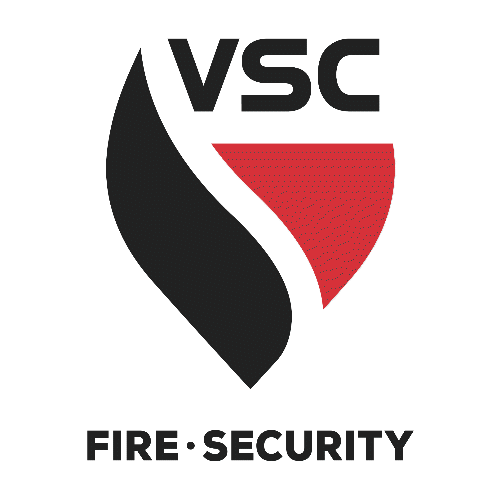
HAZARD
Anytime an employee is exposed to falling objects from above an Overhead Fall Hazard exists. As a VSC employee, the following are examples of work site conditions where you may be exposed to this type of hazard:
- Working or walking beneath other trades who are performing tasks at upper surface levels or from elevated work platforms such as scissor lifts, scaffold, aerial lifts and ladders.
- Areas directly underneath or within struck-by hazard zones of material handling / lifting operations such as cranes and forklifts.
- Unsecured equipment, materials, or tools placed within 6 feet of an open edge, a hole or roof that can be dropped or bumped off to lower levels.
- Client / Customer work environments with production facilities that have multiple overhead operations, such as conveyors or mechanical processes, from which product or materials can be dropped; or where customer employees perform tasks in elevated work zones with the potential to drop material or equipment to areas below.
PREVENTATIVE MEASURES:
Examples and acceptable practices:
- Hard hats must be worn at all times by all employees.
- GC or host employer must erect toeboards, screens, or guardrail system to prevent objects from falling from higher levels.
- Erect a canopy structure over walkways, entrances & exits of building.
- Keep potential fall objects far enough from the edge of higher levels so that those objects would not go over the edge if they were accidentally displaced.
- Barricade the area where objects could fall and prohibit employees from entering the barricaded area.
- Keep objects, such as plywood or pipe that can fall outside of the ground level barricade zone, from the edge of higher levels.
- Use tethers on tools and small equipment.

VSC‘s site supervisor will use the VSC site safety check list to identify all fall hazards and protection methods to be used at the jobsite.
- VSC’s job-site crew will be properly trained on VSC’s Fall Protection Safety Policy and adhere to the requirements.
- VSC’s site Supervisor must attend GC project pre-construction meeting to obtain contractor required overhead fall protection.
- Document & train crew before project start date on all job-site fall protection requirements.
- Instruct any new employees assigned to project, before their start date, on fall hazards & preventative measures.
- Report and document any missing or damaged overhead fall protection methods to General Contractor and VSC Field Safety Manager, and stop all work within the fall hazard until corrected.
- Report and document any violation by other trades within VSC’s work zone to the General Contractor or Host Employer.
- Conduct & document weekly site safety audits and safety meetings for duration of project to ensure compliance.
- VSC employees must erect a barricade or use a spotter in areas below VSC’s elevated work platforms and ladders when there is the potential to drop objects and striker other workers.
- Precautions must be taken to protect clients’ employees, staff, customers & residents from dropped objects when working in overhead areas of occupied properties. Use barricades or a spotter at the floor level, near ladders, and by lift equipment.
- Arrange with management restricted pedestrian access when necessary.
- All accidents with or without injury must be fully investigated before proceeding with work. “The next dropped object might actually hit someone”

